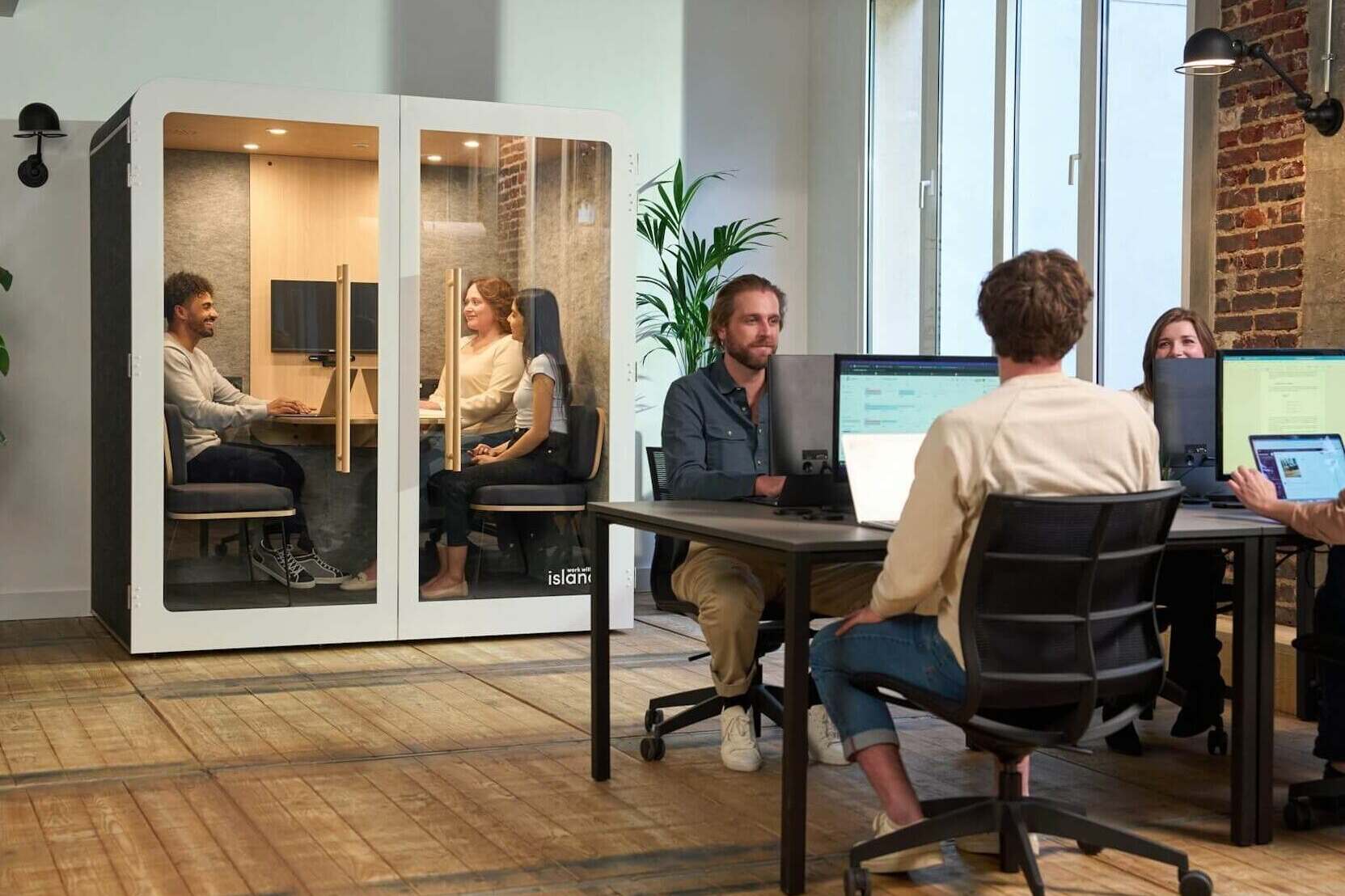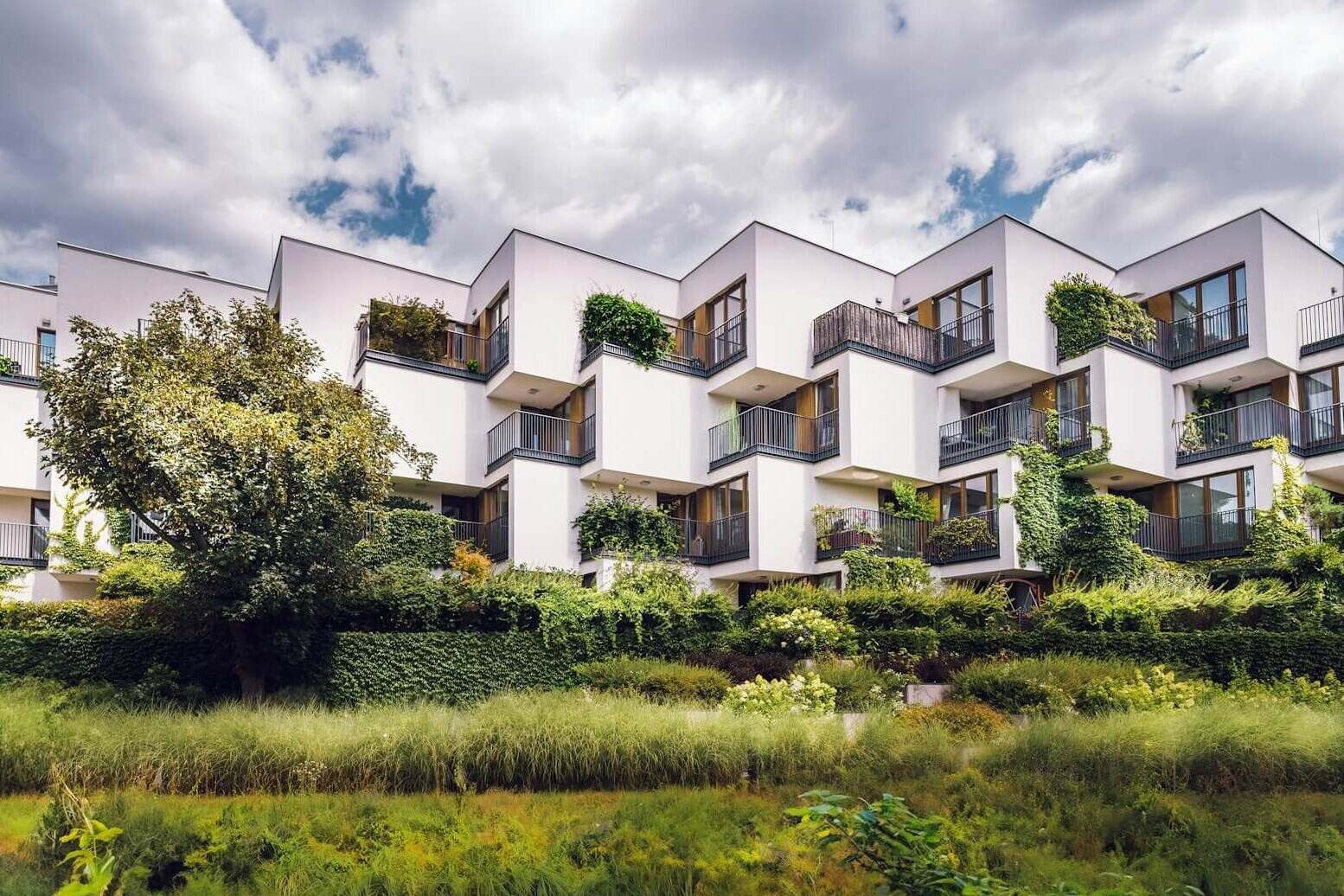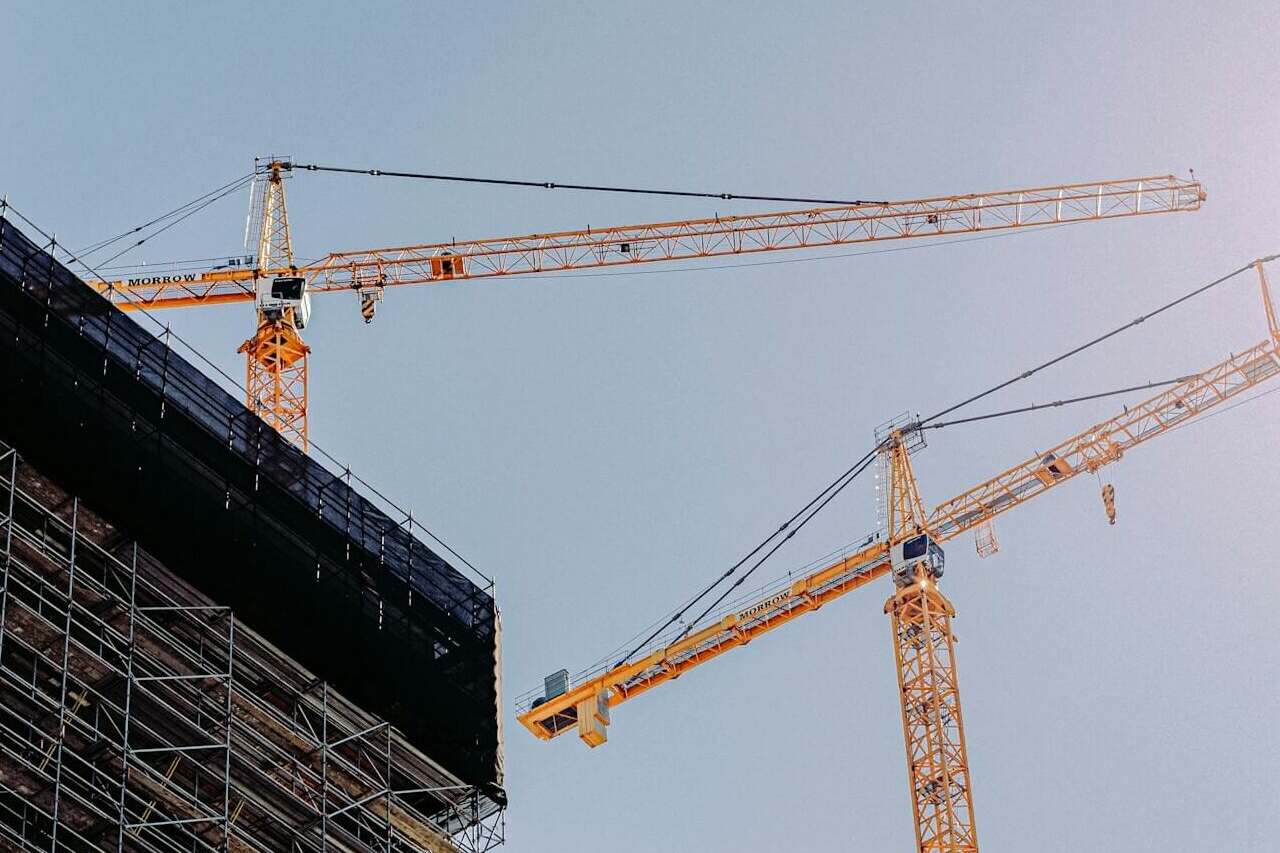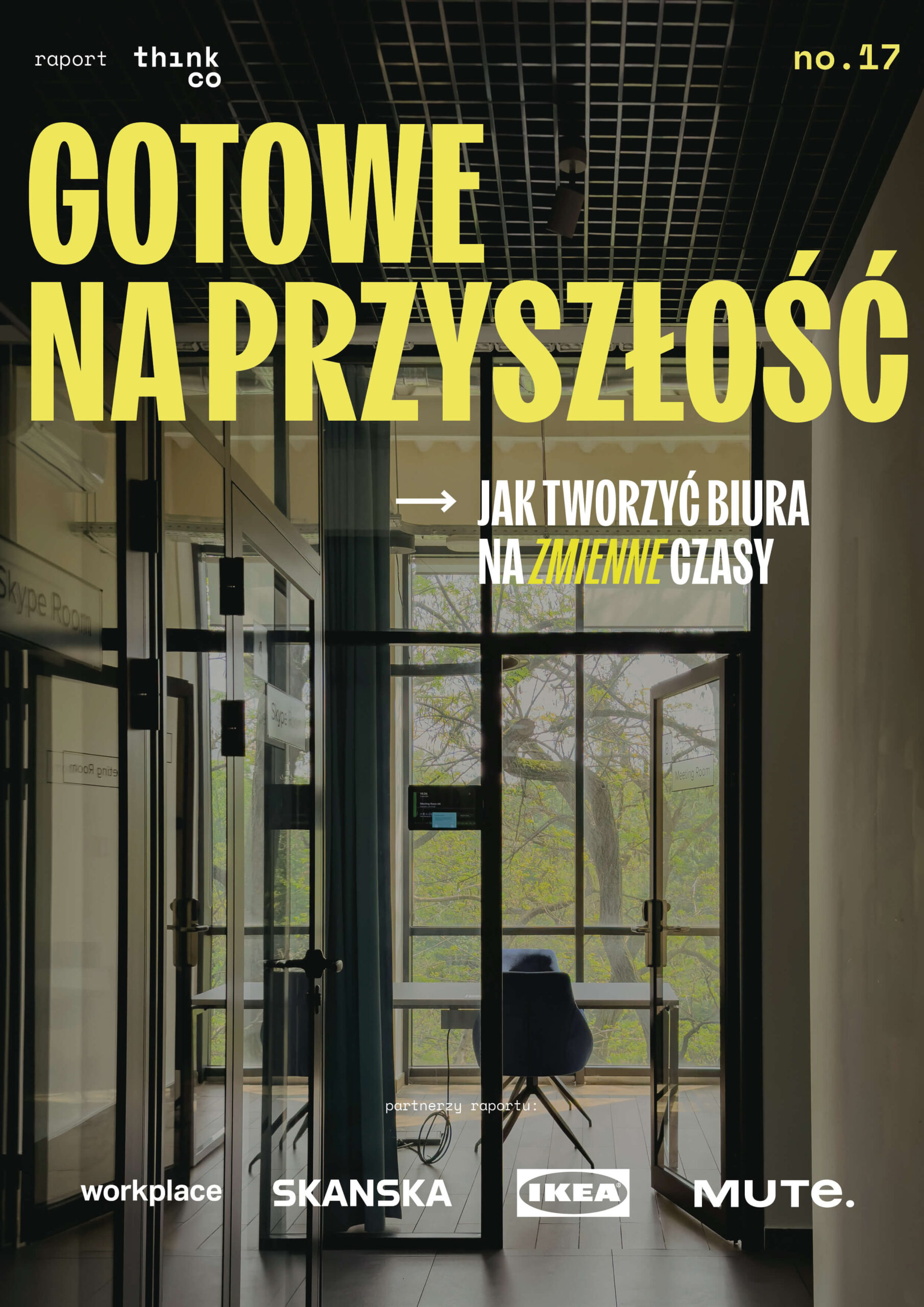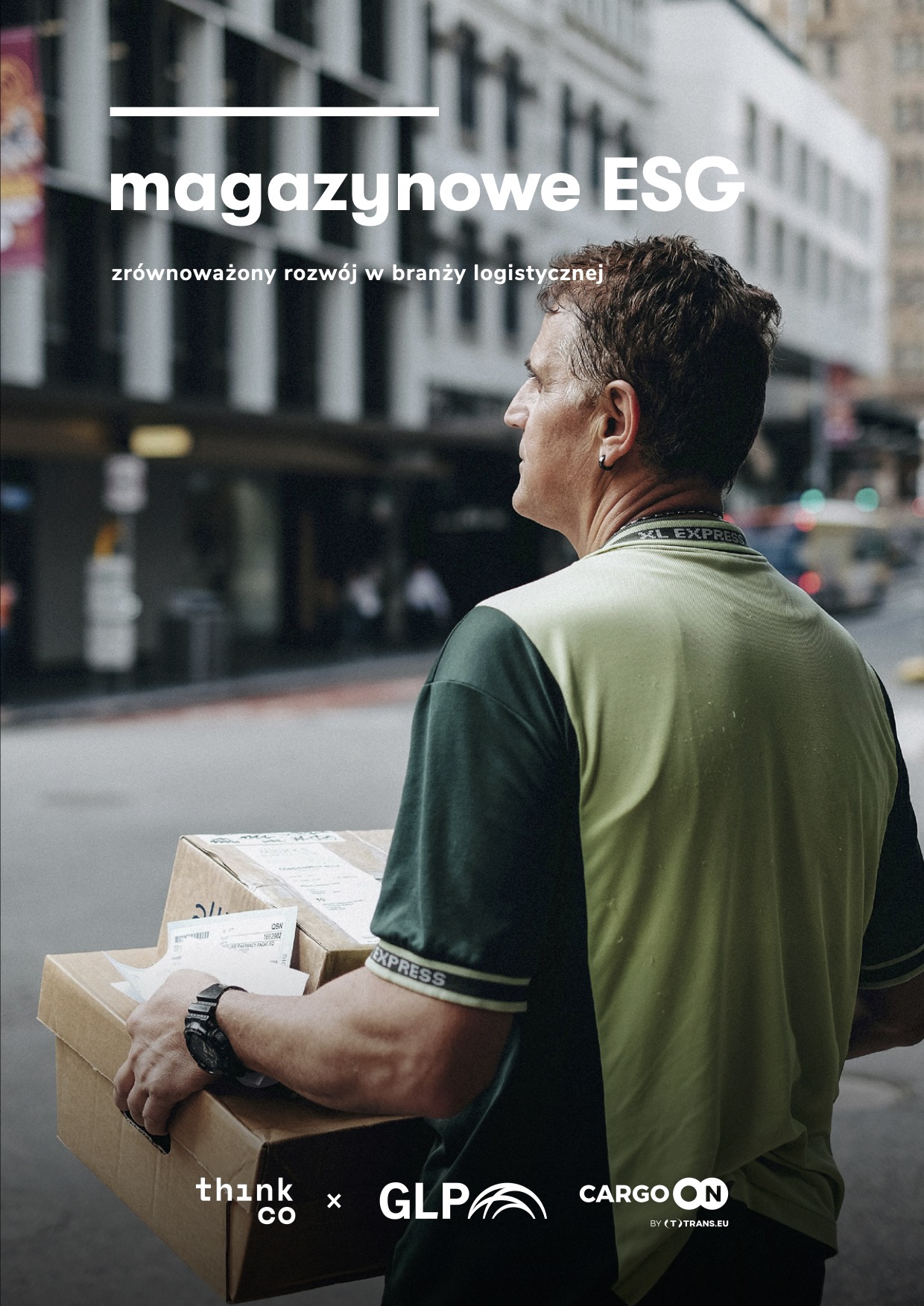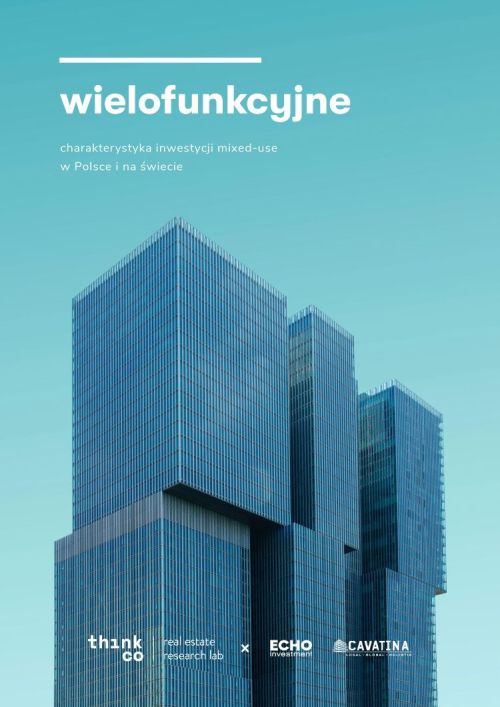More than half of Poles are happy in their city, according to a survey conducted by ThinkCo and Otodom - Szczęśliwy dom. It takes a closer look at what aspects affect the sense of happiness in the city in which we live and in the immediate vicinity. Most often we appreciate the access to shops (29%), good public transport (23.9%) and the natural environment (23.2%). In which Polish cities do we feel happiest and what influences the sense of satisfaction?
Happy Home reports, take a closer look at what aspects affect our level of happiness in the context of where we live. This time we asked Poles how they feel in the city where they live. Respondents not only assessed their satisfaction, but also indicated what factors influence their subjective sense of happiness.
The study also showed what makes us unhappy and allowed us to diagnose what problems individual Polish cities face.
The seside as a top destination
Over 57% of respondents declare that they are happy where they live. The inhabitants of Gdynia, Gdańsk and Zielona Góra are the most satisfied with where they live. że są szczęśliwi tam, gdzie żyją. Najbardziej zadowoleni z tego, gdzie mieszkają są mieszkańcy Gdyni, Gdańska i Zielonej Góry.
„“Our research shows that combining practical solutions with a place to relax is the key to happiness in the city. However, they must go hand in hand with the proximity of nature, a wide selection of cultural attractions and access to entertainment, all in an atmosphere of security,” emphasizes Karolina Klimaszewska, Otodom analyst. że połączenie praktycznych rozwiązań z uwzględnieniem miejsca na relaks jest kluczem do szczęścia w mieście. Muszą one jednak iść w parze z bliskością natury, szerokim wyborem atrakcji kulturalnych i dostępem do rozrywki, a wszystko to w atmosferze poczucia bezpieczeństwa” – podkreśla Karolina Klimaszewska, analityczka Otodom.
For 29% of people, convenient access to shops is key - we want to arrange everyday matters in the immediate vicinity. Other equally important elements are public transport (23.9%) and the natural environment, including the proximity of green areas and clean air (23.2%). Safety (21.7%) and access to entertainment and culture (21.1%) are also equally important.
The size of the city and the priorities of the inhabitants
The structure of these preferences changes with the size of the city. While in the largest centers (over 500,000 inhabitants) we value the access to cultural attractions (37.8%) and shops (36.7%) the most, in smaller cities (from 100 to 200 thousand inhabitants) next to the proximity of shops ( 28.6%) good public transport is gaining importance (23.8%). In small towns (up to 50,000 inhabitants), the most frequently indicated positive elements are access to nature (27.2%), safety (25.1%) and low cost of living (23.4%). Many of these factors are assessed differently by the inhabitants of the largest cities. For example, the cost of living is the second least frequently indicated element positively translating into their satisfaction. More information can be found in the reports of ThinkCo and Otodom – Happy Home.
“The declared level of happiness increases with the size of the city, but only up to the threshold of 200-500 thousand. inhabitants” – comments Przemysław Chimczak-Bratkowski from ThinkCo. “Cities with up to half a million inhabitants can already boast a developed service, communication and cultural infrastructure. On the other hand, the weaker results of the largest cities in this ranking result from a very high percentage of people who assess the cost of living and the condition of the natural environment as low.” – adds managing partner at ThinkCo.
Interestingly, the level of happiness increases with age. On the scale of the entire society, there is a clear increase in the subjective sense of satisfaction from the youngest age group to the 60-year-olds. However, it clearly decreases among people aged 70+, which may be related to their greater sensitivity and dependence. Aspects related to the cost of living, accessibility of communication, culture and entertainment or health care affect them more. In response to the needs of this social group, the so-called senior housing, i.e. designed with the needs of the elderly in mind. Convenience and the feeling of being part of a community that gives them a chance to live an active life is especially important to them. That is why such construction is distinguished by a convenient common space and a wide range of additional services.
The cost of living is the enemy of happiness
Unfortunately, one in five of us (21%) are not happy where they live. According to the study by ThinkCo and Otodom – Szczęśliwy dom, the inhabitants of Częstochowa, Kalisz and Ruda Śląska are the least satisfied. In all these cities, limited access to entertainment and cultural attractions is among the three most frequently mentioned problems. In the case of Częstochowa, the road to happiness is also hindered by the high cost of living and difficult access to health care - this aspect is also a challenge for the inhabitants of Kalisz. They also pointed to limited access to green areas, high street noise and air pollution. Interestingly, the environmental aspect is also most often mentioned by the inhabitants of Ruda Śląska, who also pointed out that the city is not neat and clean.
The high cost of living is the hardest hit across the country. As many as 36% of people indicated that finances are the biggest obstacle for them to achieve a sense of satisfaction. Only in the smallest towns (up to 50,000 inhabitants) limited access to entertainment and cultural attractions is indicated more often (28.8%). We also complain about the poor condition of the environment, high street noise and clean air (23.9%), as well as limited access to health care (22.2%). We are also negatively affected by inefficient public transport and problems with commuting (22%).
Download the report "Happy Home. A city good to live in”
Download the report "Happy Home. A district of various needs"
Download the report "Happy Home. A neighborhood close to the heart”


Więcej niż połowa Polaków jest szczęśliwa w swoim mieście – wynika z badania przeprowadzonego przez ThinkCo i Otodom – Szczęśliwy dom. Bierze ono pod lupę to, jakie aspekty wpływają na poczucie szczęścia w mieście, w którym żyjemy i najbliższej okolicy. Najczęściej doceniamy dostęp do sklepów (29%), dobrą komunikację miejską (23,9%) oraz środowisko naturalne (23,2%). W których Polskich miastach czujemy się najszczęśliwsi i co wpływa na poczucie zadowolenia?

Raport „Szczęśliwy dom. Miasto dobre do życia” Otodom and ThinkCo bierze pod lupę to, jakie aspekty wpływają na nasz poziom szczęścia, w kontekście tego, gdzie mieszkamy. Tym razem zapytaliśmy Polaków, jak czują się w mieście, w którym mieszkają. Respondenci nie tylko oceniali swoje zadowolenie, ale także wskazywali, jakie czynniki wpływają na ich subiektywne poczucie szczęścia.
The study also showed what makes us unhappy and allowed us to diagnose what problems individual Polish cities face.
Morze górą
Over 57% of respondents declare that they are happy where they live. The inhabitants of Gdynia, Gdańsk and Zielona Góra are the most satisfied with where they live. że są szczęśliwi tam, gdzie żyją. Najbardziej zadowoleni z tego, gdzie mieszkają są mieszkańcy Gdyni, Gdańska i Zielonej Góry.
„“Our research shows that combining practical solutions with a place to relax is the key to happiness in the city. However, they must go hand in hand with the proximity of nature, a wide selection of cultural attractions and access to entertainment, all in an atmosphere of security,” emphasizes Karolina Klimaszewska, Otodom analyst. że połączenie praktycznych rozwiązań z uwzględnieniem miejsca na relaks jest kluczem do szczęścia w mieście. Muszą one jednak iść w parze z bliskością natury, szerokim wyborem atrakcji kulturalnych i dostępem do rozrywki, a wszystko to w atmosferze poczucia bezpieczeństwa” – podkreśla Karolina Klimaszewska, analityczka Otodom.
For 29% of people, convenient access to shops is key - we want to arrange everyday matters in the immediate vicinity. Other equally important elements are public transport (23.9%) and the natural environment, including the proximity of green areas and clean air (23.2%). Safety (21.7%) and access to entertainment and culture (21.1%) are also equally important.
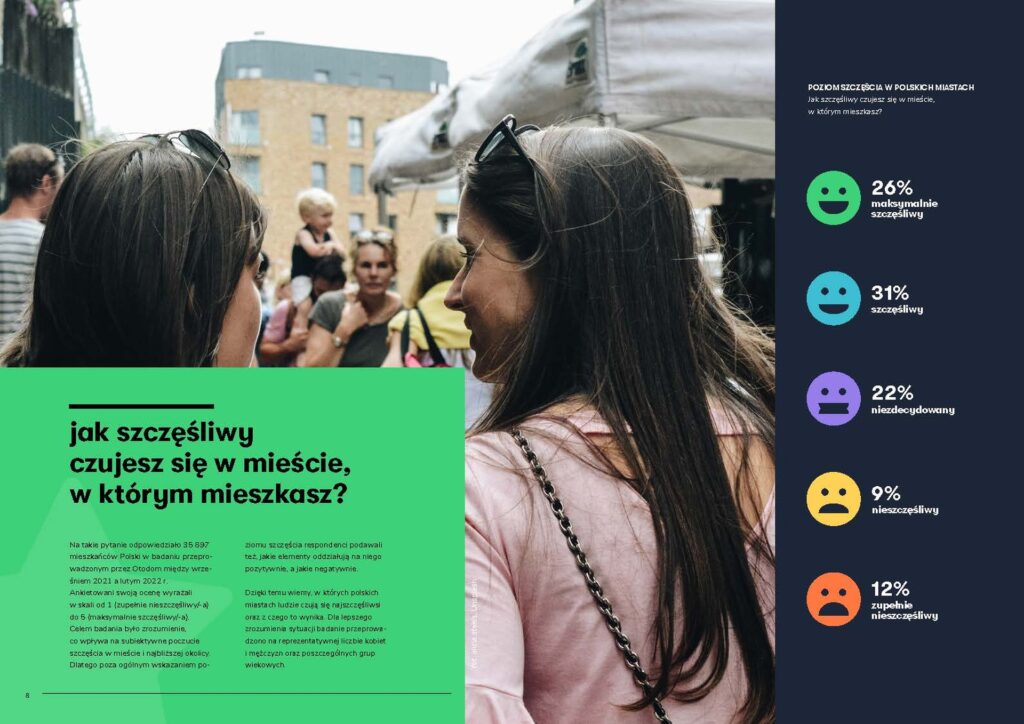
Wielkość miasta a priorytety mieszkańców
Struktura tych preferencji zmienia się wraz z wielkością miasta. Podczas gdy w największych ośrodkach (powyżej 500 tys. mieszkańców) najbardziej cenimy dostęp do atrakcji kulturalnych (37,8%) i sklepów (36,7%), to w mniejszych miastach (od 100 do 200 tys. mieszkańców) obok bliskości sklepów (28,6%) na znaczeniu zyskuje dobra komunikacja miejska (23,8%). W małych miastach (do 50 tys. mieszkańców) najczęściej wskazywane pozytywne elementy to dostęp do natury (27,2%), bezpieczeństwo (25,1%) i niskie koszty życia (23,4%). Wiele z tych czynników jest inaczej ocenianych przez mieszkańców największych miast. Dla przykładu koszty życia są drugim najrzadziej wskazywanym elementem pozytywnie przekładającym się na ich zadowolenie.
“The declared level of happiness increases with the size of the city, but only up to the threshold of 200-500 thousand. inhabitants” – comments Przemysław Chimczak-Bratkowski from ThinkCo. “Cities with up to half a million inhabitants can already boast a developed service, communication and cultural infrastructure. On the other hand, the weaker results of the largest cities in this ranking result from a very high percentage of people who assess the cost of living and the condition of the natural environment as low.” – adds managing partner at ThinkCo.
Interestingly, the level of happiness increases with age. On the scale of the entire society, there is a clear increase in the subjective sense of satisfaction from the youngest age group to the 60-year-olds. However, it clearly decreases among people aged 70+, which may be related to their greater sensitivity and dependence. Aspects related to the cost of living, accessibility of communication, culture and entertainment or health care affect them more. In response to the needs of this social group, the so-called senior housing, i.e. designed with the needs of the elderly in mind. Convenience and the feeling of being part of a community that gives them a chance to live an active life is especially important to them. That is why such construction is distinguished by a convenient common space and a wide range of additional services.
Koszty życia wrogiem szczęścia
Niestety, co piąty z nas (21%) nie jest szczęśliwy w miejscu, w którym żyje. Najmniej zadowoleni są mieszkańcy Częstochowy, Kalisza i Rudy Śląskiej. We wszystkich tych miastach wśród trzech najczęściej wymienianych problemów jest ograniczony dostęp do rozrywki i atrakcji kulturalnych. W przypadku Częstochowy utrudnieniem na drodze do poczucia szczęścia są także wysokie koszty życia oraz trudny dostęp do służby zdrowia – aspekt ten jest również wyzwaniem dla mieszkańców Kalisza. Wskazali oni również na ograniczony dostęp do terenów zielonych, wysoki hałas uliczny i zanieczyszczenie powietrza. Co ciekawe, aspekt środowiskowy jest także najczęściej wymieniany przez mieszkańców Rudy Śląskiej, którzy również zwrócili uwagę na fakt, że miasto nie jest zadbane i czyste.
W skali całego kraju najbardziej dotkliwie odczuwamy wysokie koszty życia. Aż 36% osób wskazało, że to finanse są dla nich największą przeszkodą do osiągnięcia poczucia zadowolenia. Jedynie w najmniejszych miejscowościach (do 50 tys. mieszkańców) częściej wskazywany jest ograniczony dostęp do rozrywki i atrakcji kulturalnych (28,8%). Narzekamy także zły stan środowiska, wysoki poziom hałasu ulicznego i czystość powietrza (23,9%) , a także ograniczony dostęp służby zdrowia (22,2%). Negatywnie wpływają na nas również nieefektywna komunikacja miejska i problemy z dojazdami (22%).
Pobierz bezpłatne raporty ThinkCo i Otodom – Szczęśliwy dom
![]()
ThinkCo
We are the first advisory company in Poland specializing in new ideas for real estate. We combine the knowledge of researchers and architects with business world experience, creating innovative processes, products, and services for the real estate market.
We focus on interdisciplinarity. Our specialists come from various environments and represent different experiences, constantly expanding the range of our capabilities and knowledge. The role of ThinkCo is to use this knowledge as an opinion maker in the process of implementation of new solutions on the real estate market.







